The 33 Best Things to Do in Sofia, Bulgaria (From a Local)
Sofia, Bulgaria offers a surprising array of activities.
If you’re searching for a destination that combines modern and ancient, chic and quirky, nightlife and nature, you should consider exploring the capital of Bulgaria.
Below, you’ll find 33 of the best things to do in Sofia, Bulgaria.
Among them, I’ve gathered my favorite free, fun, amazing, hidden, and unusual activities you can do in the Bulgarian capital.
Being born and raised in Sofia, you might think I’m a bit biased. However, I’ve traveled to 45+ countries and visited a ton of capitals. None of them offered such diversity!
Ready to explore?
Let me be your personal local guide!
Disclaimer: This post contains affiliate links. If you purchase something through one of them, I may receive a small commission at no extra cost to you. Thank you for helping me create free content on this website!
The Best Things to See and Do in Sofia, Bulgaria
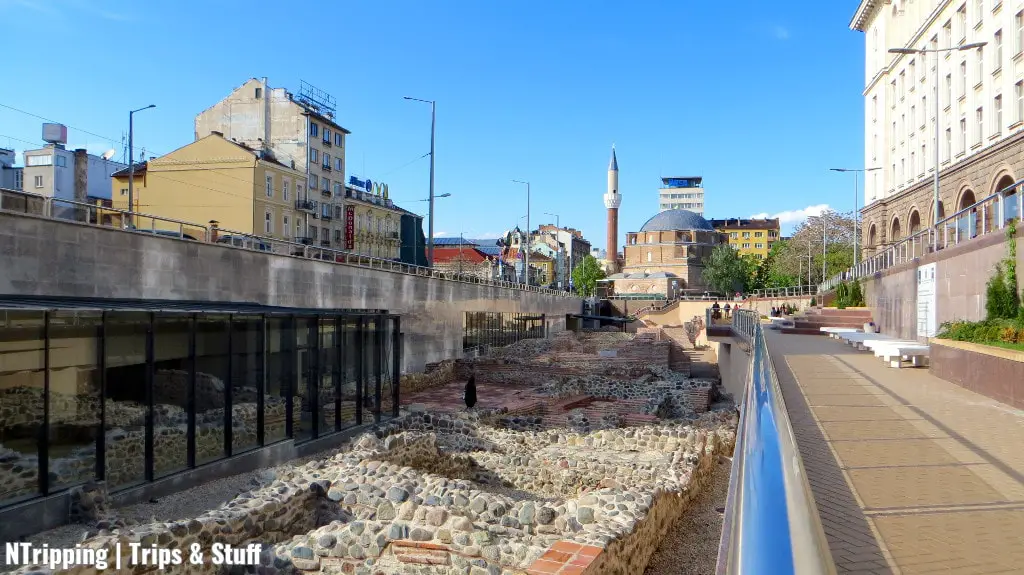
If you’re wondering what to do in Sofia, Bulgaria, you’re in the right place. As a Sofia-born avid traveler, I’ve explored every possible activity in the city.
What’s important to know is that most of Sofia’s landmarks are conveniently situated in the city center within walking distance.
This means you will not waste your precious travel time to commute from one attraction to another. Instead, you can use the extra time to just relax for a few hours, taste scrumptious Bulgarian food, or go shopping.
When you start exploring, you’ll quickly discover that the city is multi-layered, multi-cultural, multi-ethnical, and multi-religious. And, not surprisingly, quite colorful and very tolerant.
You’ll shake your head in disbelief, your jaw will drop in awe, your eyes will fill with tears, and your head will spin from the emotional rollercoaster you’re going to experience while walking the streets and visiting the sites of the Bulgarian capital.
So, let me help you discover the top things to do in Sofia, Bulgaria in the best way possible.
The Temples of Sofia: A Lesson in History, Religion, and Tolerance
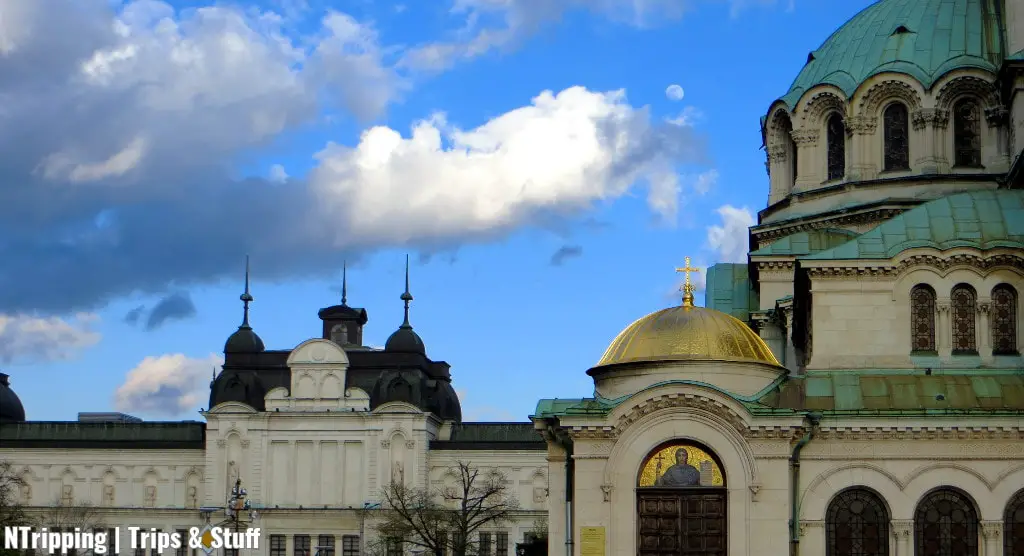
There’s no better way to immerse yourself in Sofia’s history than by visiting the major temples in the city.
Not only will you learn fascinating first-hand facts about Bulgaria, but you’ll also get a real-life lesson in tolerance. Most of the temples in the city don’t require a ticket. This makes visiting them one of the best free things to do in Sofia.
✔️ Tip: All temples are open to the public but keep in mind they are active places of worship. Be respectful and don’t disturb the people praying inside. Dress appropriately in all seasons. Take off your hat before entering churches and your shoes before stepping into mosques.
1. St. George Rotunda: The Oldest Temple in Sofia
St. George Rotunda, the oldest temple in Sofia, is quietly tucked in the inner yard between the Presidency, Sheraton Hotel, and the Ministry of Education.
The neighboring communist-era structures shelter the little church from the outside hassle and noise. Once you find yourself in the inner yard, you’ll be transported back in time.
The brick building of the Rotunda was erected in the 4th century. Nowadays, it’s a functioning church.
You’ll notice that St. George Rotunda sits below the street level, under layers of history. Around it, you can see the ruins of a Roman street, as well as the contours of residential buildings.
2. St. Sofia Church: A Byzantine Church and a Roman Necropolis
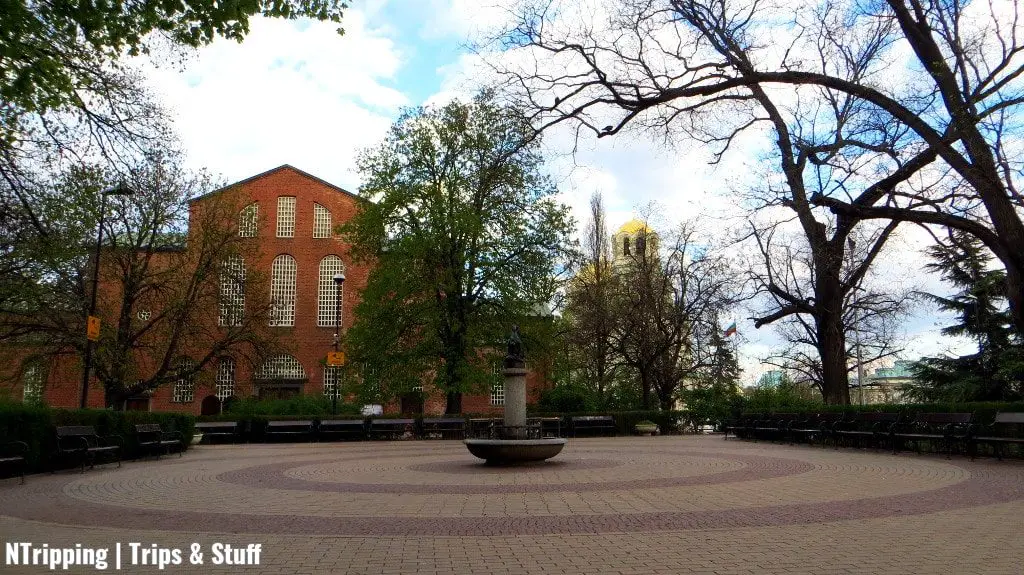
St. Sofia Church is a red-bricked Byzantine church built in the 6th century.
Below it, you’ll find one of the newest museums in Sofia. It opened its doors to the public in 2013.
The church was constructed on top of a necropolis, as well as the remains of three earlier churches.
Inside the necropolis, you can explore around 50 tombs built between the 3rd and the 5th century BC. The newer ones bear Christian symbols.
Frescoes adorn the walls of several tombs. This is very unusual for burial sites of this era. Moreover, the floors are strikingly ornamented with mosaics.
The sight of the underground museum will make you forget that you’re indeed in the 21st-century capital city of Bulgaria. That’s my favorite archaeological site in Sofia and I love taking my friends there when they visit my city.
3. Alexander Nevsky Cathedral: Bulgaria’s Largest Cathedral
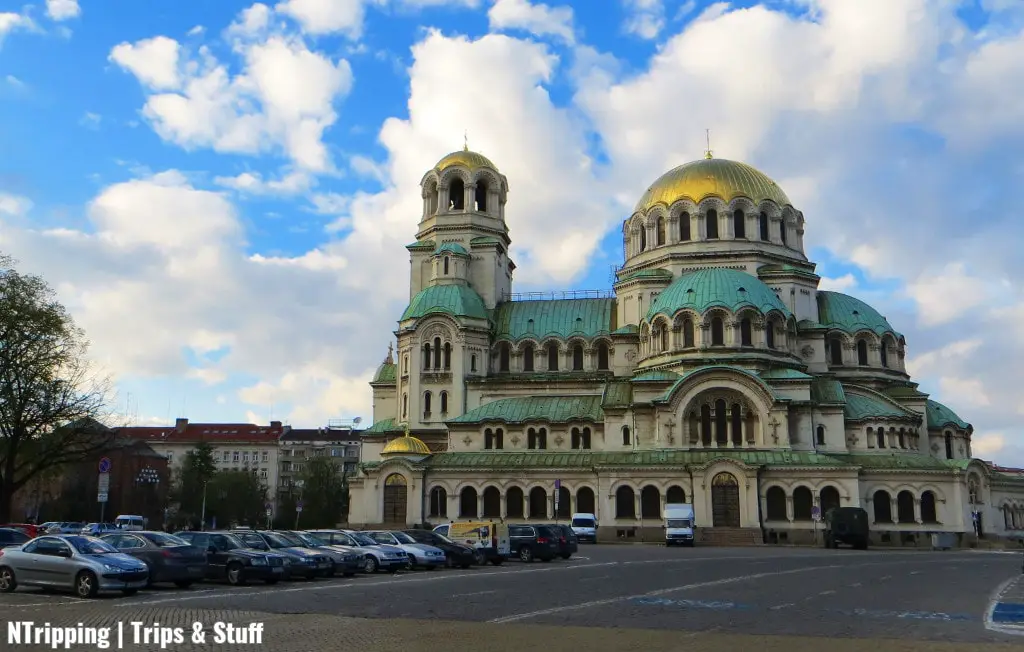
Alexander Nevsky Cathedral is the biggest cathedral in Bulgaria and one of the largest Orthodox cathedrals in the world. For us Bulgarians, it’s one of the most important Christian temples in the country.
It was erected in 1912 in the Neo-Byzantine architectural style.
The most famous landmark of Sofia is clearly visible from a plane. If you happen to arrive by air, make sure to look through the window to admire the cathedral’s golden domes.
Don’t miss the chance to take a look inside the cathedral once you’ve marveled at its exterior. The sight of the marble columns and thrones, and the smell of incense will play with your senses.
Located underneath the cathedral, you’ll also find the Alexander Nevsky Crypt. It hosts a collection of icons and Christian artifacts. The entrance is on the left-hand side of the imposing cathedral.
4. Sveta Nedelya Cathedral: The Exact Centre of Sofia
Sveta Nedelya Cathedral, or the Holy Sunday Cathedral as the name translates, is considered the central point of Sofia.
The cathedral stands on top of the crossroads of ancient Serdica’s main streets and hides a lot of mysteries inside its tombs.
The first church on this spot was constructed in the 10th century. Later it was demolished. In 1867, a much larger cathedral was erected in its place.
Earthquakes, bombings, and assassinations took place in or around the cathedral, leaving their marks and the blood of hundreds of people on the walls. In 1925, over 150 people were killed in a terrorist bombing. The cathedral was later restored and expanded.
5. The Sofia Synagogue: The Second-Largest Synagogue in Europe
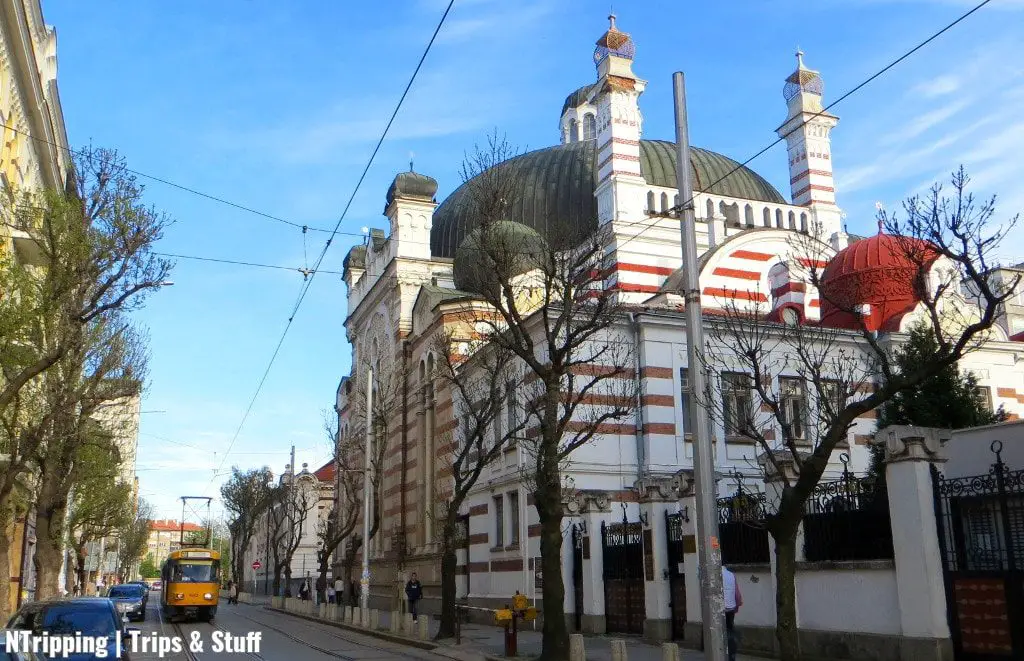
Sofia Synagogue was designed in the Bulgarian National Romanticism style by the Austrian architect Grunanger in the early 1900s.
The temple is the largest Sephardic synagogue in Europe. Venetian polychrome mosaic covers the floors, while divine floral motives adorn the walls.
Keep in mind that the synagogue is closed on Saturdays. You also need a ticket to visit the interior. Although not free, it’s still one of the best things to do in Sofia.
6. Banya Bashi Mosque: Sofia’s Central Mosque
Banya Bashi Mosque, Sofia’s Central Mosque, used to be part of a larger bath complex. This explains the name Banya, which means bath. The location of the mosque is right next to the Central Mineral Baths.
The architect, who designed the Banya Bashi Mosque, is the great Kodja Mimar Sinan. He’s the mastermind responsible for the construction of some of the most famous mosques in the Ottoman Empire.
The encryption on the mosque’s wall reads 1576. However, travelers have reported visiting the temple as early as 1553.
You’re welcome to explore the mosque from the inside. The interior of the Banya Bashi Mosque is decorated with stunning artistically inscribed Koran citations and floral ornaments.
7. St. Nicholas the Miracle-Maker, a.k.a. The Russian Church
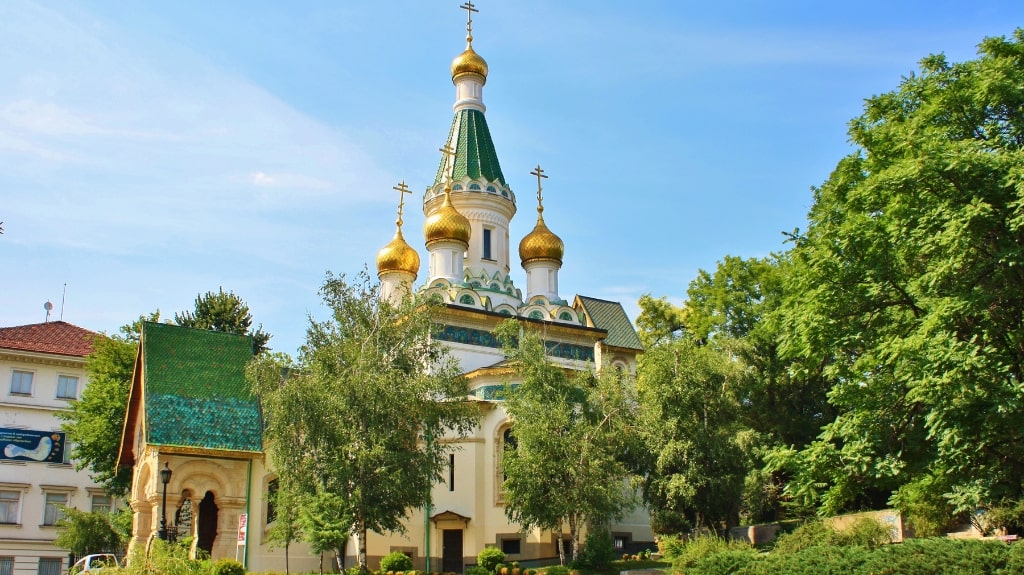
St. Nicholas the Miracle-Maker is one of the most beautifully decorated churches in Sofia. It’s more famously known as the Russian Church.
Both its interior and exterior are rich in detail and are covered with an impressive amount of gold, marble, and vibrant tiles.
The church was built in 1914. Its distinguishable gilded onion domes are a lovely contrast to the surrounding buildings in downtown Sofia.
8. Boyana Church: Life-Like Frescoes of Saints and Rulers
Vitosha Mountain on the outskirts of Sofia houses several important historical sites. One of them is the 11th-century Boyana Church.
The medieval Christian temple is a UNESCO World Heritage Site. It’s famous for the staggering frescoes of Bulgarian saints and rulers.
The depictions are life-like and extremely detailed. This is something untypical for the Middle Ages and the reason the masterpieces are world-renowned by artists and historians.
✔️ Tip: If I’m in Sofia when you’re visiting, I’d love to show you this Bulgarian gem myself. But if I’m not available, the easiest way to explore Vitosha Mountain and Boyana Church is by joining this small-group guided tour.
Sofia’s Museums and Galleries: Exploring Science and Art
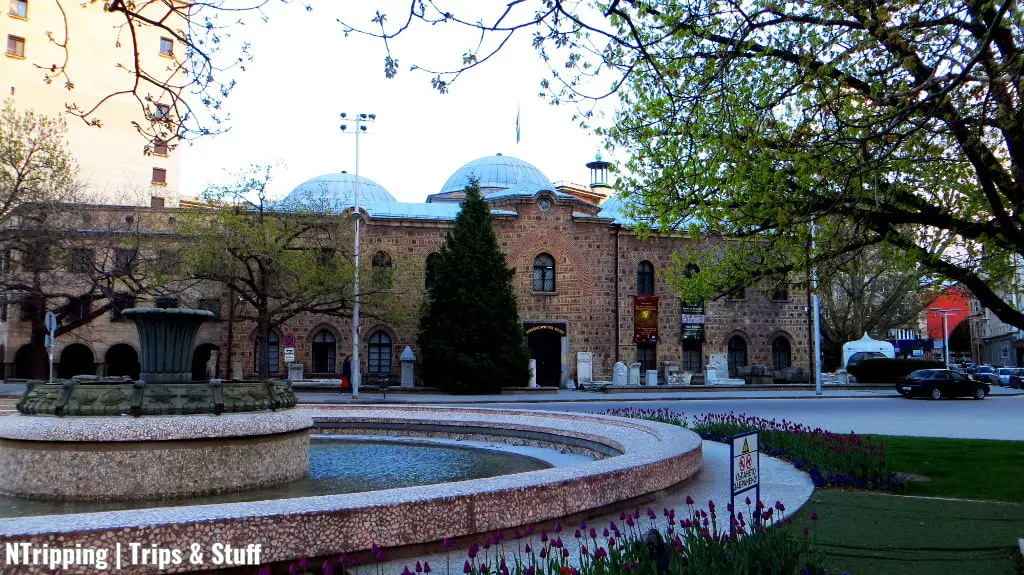
History buffs and culture vultures will be happy to know that the museums and galleries in the Bulgarian capital offer a ton of interesting collections to explore.
The National Historical Museum, the National Archaeological Museum, and the Sofia History Museum will best answer your questions about Bulgaria’s past, while the Earth and Man Museum and the National Art Gallery will satiate your thirst for science and culture.
So, put your explorer hat on, and let’s find which museums and galleries are among the best things to do in Sofia.
✔️ Tip: Keep in mind that on Mondays most of the museums and galleries are closed. Check opening hours on the respective websites or ask your accommodation’s reception for assistance.
9. The National Historical Museum: Bulgaria’s Biggest Treasure Trove
The National Historical Museum occupies the prominent residency building of the former communist president in Boyana District.
The museum currently hosts over 650,000 items from prehistorical times to the present. You’ll need weeks only for this museum if you decide to take a closer look at the collections on display.
The invaluable golden treasures, priceless intricate manuscripts, and regal ceremonial outfits will leave you speechless.
The museum lies on the outskirts of Sofia. However, the effort of getting there and visiting the largest and most impressive Bulgarian museum is worth it.
I’ve seen many museums during my travels, but I honestly never spend more than two hours in any of them. Well, I did explore the Bulgarian National Historical Museum for over five hours on my last visit!
10. The National Archaeological Museum: Ancient Thracian and Christian Legacies
The National Archaeological Museum is located inside the building of Sofia’s oldest preserved mosque. If there’s only one museum you visit in Sofia, I recommend going to this one.
You’ll need several days to have a look at the whole collection in detail. My advice is to pay special attention to the highlight of this gorgeous museum – the bronze head of the Thracian ruler Seuthes III from the 4th century BC.
Make sure to observe the head from different angles. You’ll notice how the eyes follow you no matter where you stand. I think that’s one of the coolest sculptures you’ll ever see!
11. Sofia History Museum: Vibrant Collections in a Former Bathhouse
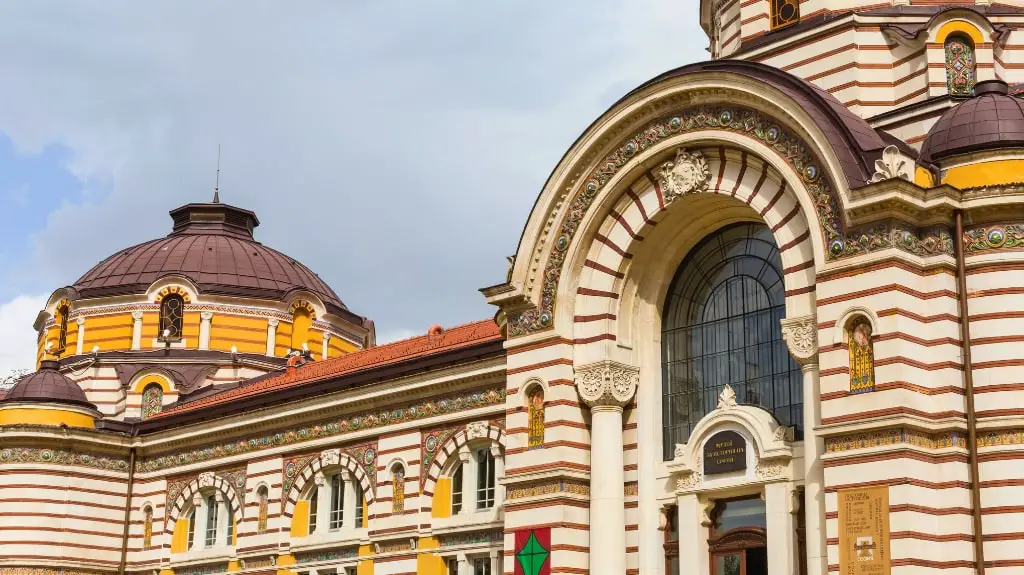
Sofia History Museum occupies the former Central Mineral Baths building. That’s one of the craziest facts about Sofia, am I right?
Even if you’re not a history buff, when was the last time you saw a collection of Orthodox icons on display in a former therapeutical pool?
The structure has been left unused for decades despite its great architectural value. Luckily, Bulgaria’s capital city did a smart thing turning the architectural masterpiece into a museum.
Inside the museum, you can follow the history of Sofia through 7,000 years. Check the 18th– and 19th-century fashion in clothing and home interiors, and see the stunning Louis XXIV horse-driven carriage.
✔️ Tip: Around the corner, you can find fountains with hot mineral water. Fill up your bottle with one of the healthiest and best-tasting waters you’ve ever tried. This is certainly the best free thing to do in Sofia.
12. The National Museum of Natural History: Animals and Minerals from All over the World
Founded in 1889, the National Museum of Natural History is the oldest Bulgarian museum.
As the name suggests, it features natural history exhibits and organizes educational programs. You can find it right next to the Russian Church.
Inside the National Museum of Natural History, you can explore thousands of stuffed mammals and birds, pinned insects, and an impressive collection of a quarter of all the world’s minerals.
13. The National Museum of Military History: A Reminder of the Bulgarian Prowess
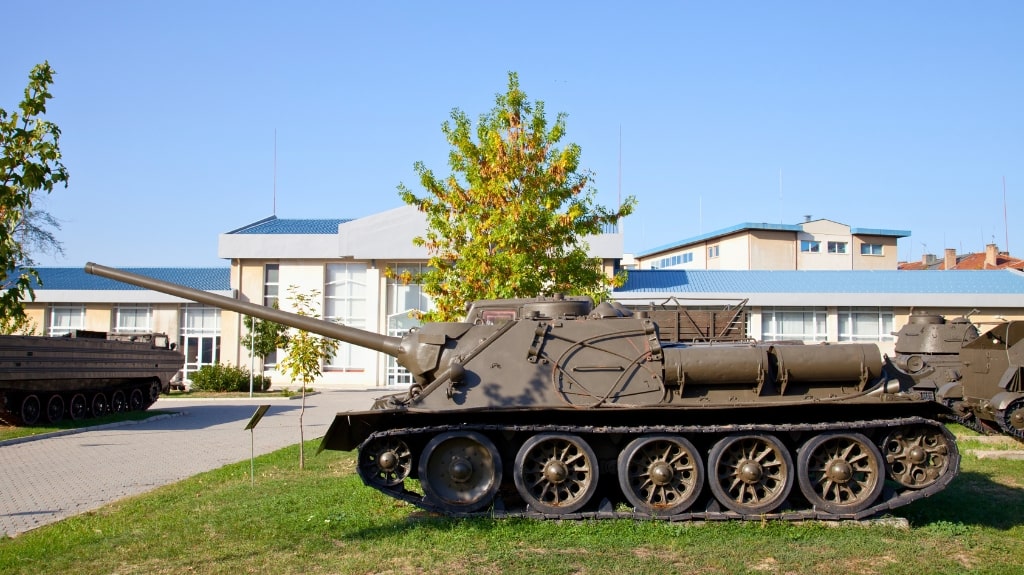
The National Museum of Military History is located a bit outside of Sofia’s center, but this shouldn’t be a problem for anyone wishing to visit it.
The most interesting collection is situated in the museum’s backyard.
Tanks, airplanes, and missiles are parked behind the museum’s building, offering a captivating glimpse into Bulgaria’s army history and prowess. It’s a unique opportunity to get up close to the powerful machines and gain a deeper appreciation for the country’s military heritage.
14. Earth and Man Museum: The Planet’s Energy Sources
The Earth and Man Museum is one of the biggest mineralogical museums in the world.
Its collection features over 20,000 pieces on display.
Inside the museum, you can learn interesting facts about the mineral resources of the world and admire the giant crystals shown.
✔️ Tip: Because of the high number of minerals in the museum, the concentration of energy has made visitors feel dizzy after an hour-long tour inside. It has never affected me, but keep this in mind when you visit.
15. The National Art Gallery and the Ethnographical Museum: Two Gems Under One Roof
The National Art Gallery occupies the former Royal Palace building in the center of Sofia.
The gallery’s collection features over 50,000 Bulgarian artworks from the Middle Ages to the present, showcasing the rich tapestry of Bulgaria’s artistic history.
My favorite collection is the 19th-century Bulgarian art. The vivid paintings will transform you to the most turbulent part of Bulgarian history – its struggles for liberation.
Additionally, within the same building, you’ll discover the National Ethnographic Museum. Its collection provides an intriguing fusion of art and culture under one historic roof.
The Ethnographical Museum offers a captivating journey through Bulgaria’s cultural heritage. Its extensive exhibits feature traditional costumes, folk art, and artifacts, providing valuable insights into the country’s diverse regional customs.
16. The Roman Ruins of Serdica: An Underground Walk Back in Time
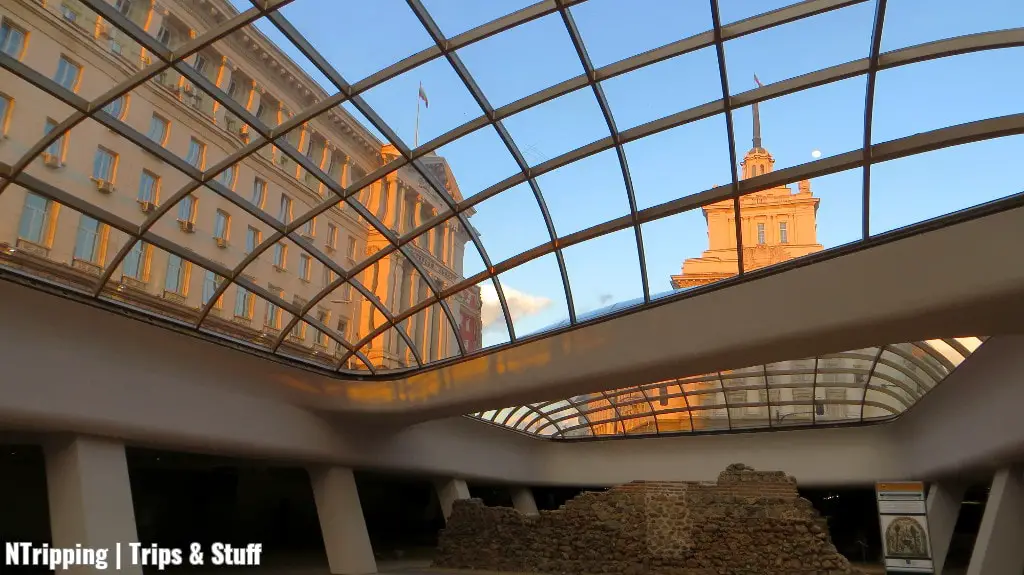
Sofia was part of the Eastern Roman Empire. At the time, the name of the settlement was Serdica.
The excavation sites of the Serdica city walls have been incorporated into the infrastructure and architecture of the Bulgarian capital.
You can find the best-preserved ruins in the Largo between the Presidency, the Central Department Store, and the Serdica Metro Station, below the street level.
In front of the nearby St. Joseph Cathedral, you can also visit the remains of the western gate.
You’ll notice how everything in the area is multi-layered. The deeper you go underground, the further back in history you’ll step in. For me, it’s quite unique to be able to walk between the centuries just like that.
Smaller parts of the city walls can also be found in the back alleys in the area, but you have to search harder to locate them. Resident buildings have surrounded some while others have been directly incorporated into hotel lobbies, subway stations, and buildings’ basements.
17. Museum of Illusions: Redefining Visual Deception
The Museum of Illusions is one of the most unusual things to do in Sofia.
It’s a mesmerizing attraction that will play tricks on your mind and will challenge your perceptions.
With mind-blowing optical illusions, mind-boggling puzzles, and interactive exhibits, this museum is a fascinating experience for visitors of all ages. It’s a world where what you see isn’t what you get, and where reality and illusion merge seamlessly.
From gravity-defying rooms to holograms that seem almost alive, the Museum of Illusions guarantees an entertaining and jaw-dropping adventure into the world of visual deception.
18. Museum of Socialist Art: Political Propaganda as an Artform
The Museum of Socialist Art offers a unique journey into Bulgaria’s recent history.
Housed in a former party house, this museum provides insights into the country’s socialist era, which lasted from 1944 to 1989.
Inside the museum, you can explore a collection of statues, political propaganda art, and memorabilia from this period. The outdoor exhibit showcases monumental socialist sculptures in a park-like setting.
The Museum of Socialist Art offers a thought-provoking experience, shedding light on Bulgaria’s socialist past and its impact on society. It’s definitely worth visiting if you’re looking for the most unusual things to do in Sofia.
Significant Buildings and Monuments in Sofia, Bulgaria
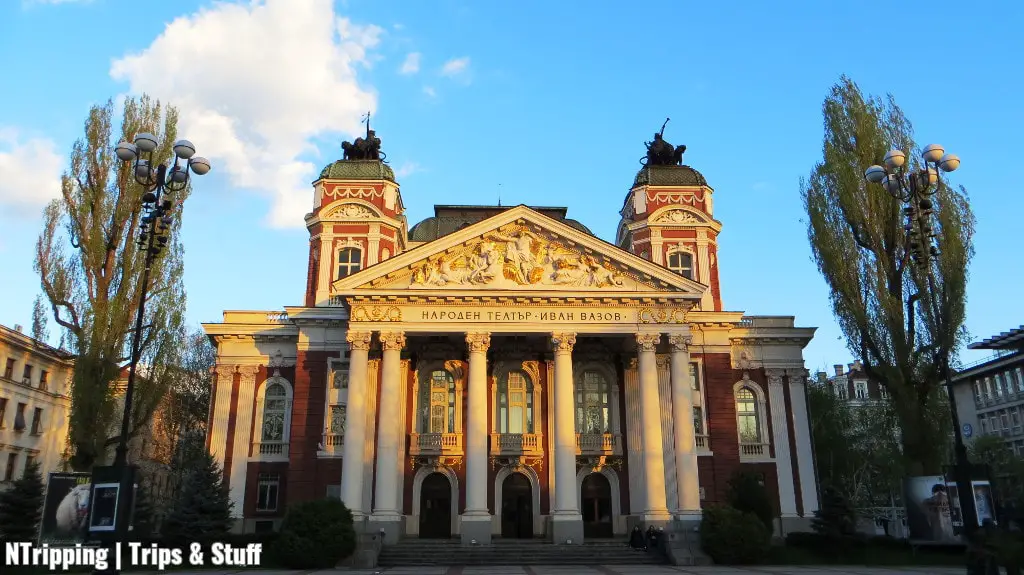
The most notable structures and monuments in the city represent a colorful mixture of architectural styles.
Doing your own walking tour and checking them out is one of the best free things to do in Sofia. And if you don’t want to explore alone, you can join one of the guided tours of the Bulgarian capital.
Let’s see what to do in Sofia.
19. The National Theatre “Ivan Vazov”: The Most Gorgeous Building in Sofia
The National Theatre is named after the patriarch of Bulgarian literature, Ivan Vazov. The drop-dead gorgeous red structure is one of the most stunning and significant buildings in the Bulgarian capital.
It represents the essence of the cultural life in the Bulgarian capital. It hosts performances every night during the theatrical season, from September to June.
Even if you can’t attend a performance, don’t miss the chance to spend a few minutes admiring the oldest and most authoritative theatre building in Bulgaria. The edifice was constructed at the beginning of the 20th century in the Neoclassical architectural style.
The charming city garden around the theater is a favorite gathering place for young and old. It hosts a gorgeous fountain and artistic sculptures, turning it into a delightful oasis in the heart of the city.
You’ll see teenagers flirting, couples dancing, street musicians performing their tunes, and elderly gentlemen playing chess. Take a seat on one of the benches and watch theatergoers and passersby starting their night out.
20. National Opera and Ballet: Staggering Interior and World-Class Talents
The National Opera and Ballet in Sofia may appear unimpressive from the outside, with its building dating back to 1953.
However, it’s the interior that will truly captivate you. As you step inside, prepare to be spellbound by its opulent and ornate design that emits timeless elegance.
The moment the performance begins, and world-renowned opera and ballet stars grace the stage, you’ll be transported into a world of artistic excellence. The unforgettable experience will surely remain in your memory for a lifetime.
21. Eagles’ Bridge and Lions’ Bridge: The Symbols of Freedom and Courage
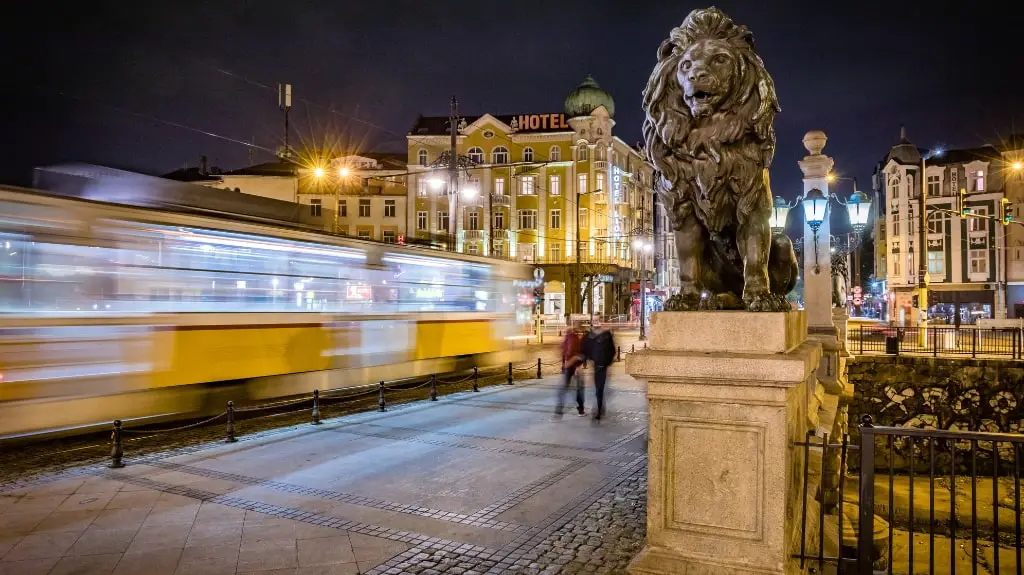
Eagles’ Bridge and Lions’ Bridge, two iconic landmarks in Sofia, hold both historical significance and stunning architectural beauty.
Eagles’ Bridge, constructed in 1891, serves as a powerful symbol of freedom. This magnificent structure graces a bustling and pivotal crossroad in the city. What makes it special are the four bronze sculptures of majestic eagles that adorn its ends, creating an awe-inspiring sight that pays tribute to Bulgaria’s enduring spirit.
The other important bridge in Sofia, the Lions’ Bridge, stands as a testament to courage and remembrance. It occupies a vital junction in the city where once the Ottoman rulers once executed their opponents.
Today, the bridge stands as a touching memorial. Four exquisite bronze lion statues, representing the revolutionaries and intellectuals who sacrificed their lives for Bulgaria’s independence, guard its ends.
22. Sofia University: The Embodiment of Knowledge and Enlightenment
Established in 1888, Sofia University is Bulgaria’s oldest higher education institution.
Its impressive building is an architectural gem. The construction was made possible with the generous support of the brothers Evlogi Georgiev and Hristo Georgiev, whose magnificent statues grace the central staircase.
This historic university embodies Bulgaria’s commitment to knowledge and enlightenment, welcoming generations of scholars through its doors.
Sofia University remains an inspiring place where the quest for intellectual achievement continues to flourish, thanks to the vision of its founders and the dedication of its students and faculty.
23. Vassil Levski Monument: The Tribute to the National Hero
Vassil Levski Monument stands as a powerful tribute to Bulgaria’s national hero and revolutionary, Vassil Levski (1837 – 1873). This striking monument marks the spot where Levski was tragically hung by Ottoman rulers.
Twice a year, on his birthday (July 18th) and the anniversary of his death (February 18th), dignitaries, parliament members, students, and citizens gather to honor his memory by leaving flowers at the monument.
✔️ Tip: Directly opposite the monument, you’ll discover the University Botanical Garden. This serene oasis of beauty is nestled in the heart of the bustling capital. Since 1892, it has been open to the public, offering a tranquil escape. Immersing yourself in the lush greenery and discovering the diverse array of plants is one of the best things to do in Sofia.
24. The Monument of Tsar Osvoboditel: The Reminder of Bulgaria’s Struggle for Liberation
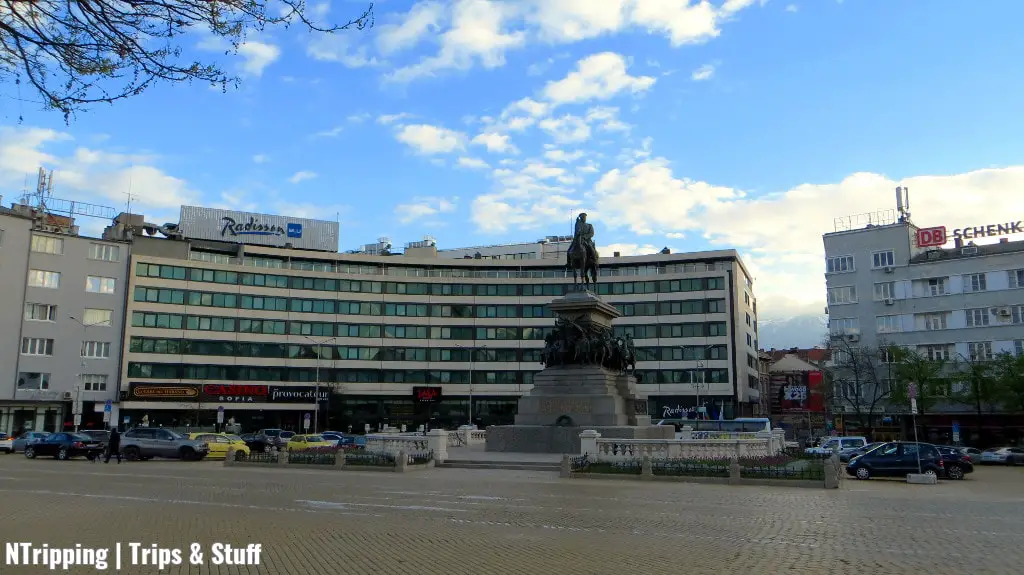
The Monument of Tsar Osvoboditel stands as a majestic tribute to the Russian Emperor Alexander II, known as Tsar Liberator.
The remarkable equestrian statue commemorates the pivotal role played by the Tsar’s armies in helping Bulgaria overthrow the Ottoman Empire’s rule in 1876. Alexander II is immortalized in bronze, mounted on his noble horse, a symbol of his enduring legacy.
Gazing towards the Bulgarian Parliament, the bronze figure of Alexander II serves as a reminder of Bulgaria’s struggle for liberation. The boulevard leading to the monument is aptly named Tsar Osvoboditel, honoring the Russian emperor’s role in Bulgaria’s history.
This iconic monument holds a special place in Sofia, both as a symbol of gratitude to a foreign liberator and as a testament to Bulgaria’s independence and resilience.
✔️ Tip: Two of the top accommodations in Sofia are located right at the square where the monument stands. Check out InterContinental Sofia and Sense Hotel Sofia. The latter features my favorite rooftop bar in Sofia with the best views of the city’s top landmarks!
25. National Palace of Culture: The Biggest Event Complex in Bulgaria
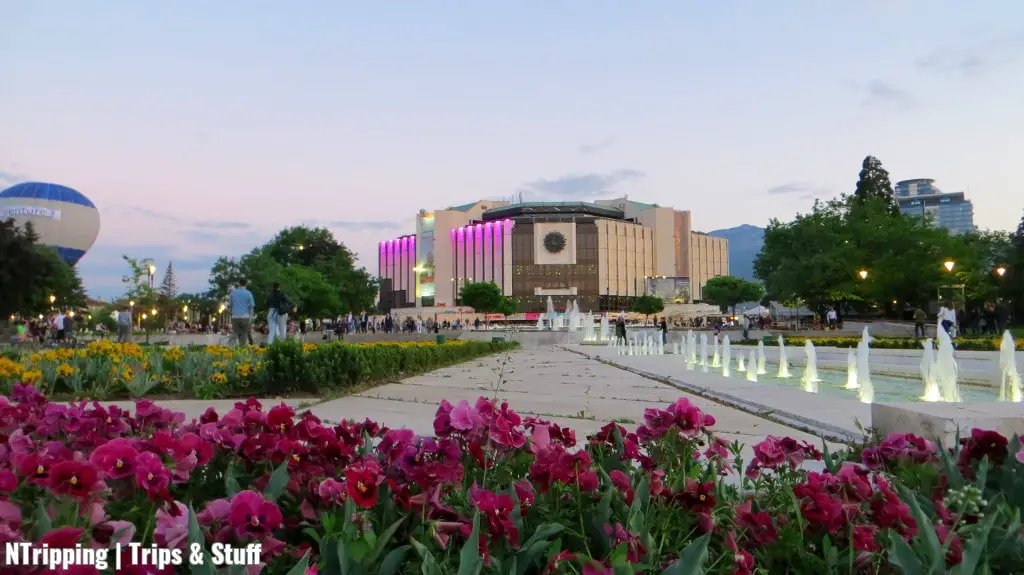
The National Palace of Culture (NDK) was built in 1981 as a congress center. It still hosts the biggest multifunctional hall in Bulgaria, as well as several smaller ones.
Countless Bulgarian and international stars have performed in Hall 1 of NDK since its inauguration.
The park around NDK is charmingly decorated with fountains and flower gardens. It’s one of my favorite places in Sofia for strolling around on a nice day, people-watching, having a drink, meeting friends, or watching the skaters.
The lively fountains and the vibrant flower beds make exploring the area the favorite free thing to do in Sofia for tourists and locals alike. Don’t miss the free photo exhibitions at two ends of this urban space as well.
Parks and Open Spaces: The Top Free Things to Do in Sofia
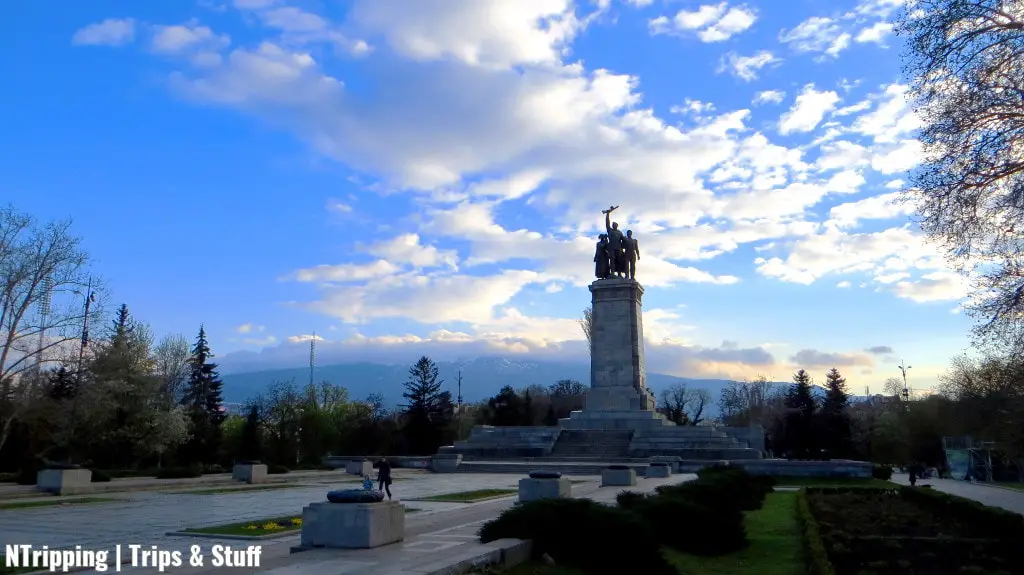
26. Borisova Gradina: The Green Lungs of Sofia
Borisova Gradina is the largest and most famous park in Sofia.
The historic green space was established in 1884. Named after the last Bulgarian monarch, Tsar Boris III, it covers a huge area of 75 acres.
Within its sprawling grounds, you can explore numerous monuments and statues, picturesque artificial lakes, stadiums and sports facilities, open-air arenas, and even an astronomy observatory.
I’ve spent countless hours wandering the park’s extensive network of walking alleys and pathways, chilling at its recreational areas, and having a tranquil moment amid the bustling capital. My favorite spot to catch an open-air live performance in summer is Maimunarnika in the middle of the park.
27. Knyazheska Garden: The So-Called Soviet Army Park
When exploring the vicinity of Sofia University and Eagles’ Bridge, you can’t miss visiting Knyazheska Garden.
The green space, also referred to as Soviet Army Park, will capture your attention with the imposing monument of the Soviet Army. It commemorates the assistance of the Russian troops during World War II. However, the monument’s controversy arises from Bulgaria’s alliance with Germany during both World Wars.
Around the monument, you can unwind while observing teenagers honing their skateboarding and biking skills with impressive flips and tricks.
This eclectic mix of controversial historical art and urban activities makes a visit to the Knyazhevska Garden one of the most unusual things to do in Sofia.
28. Kambanite Complex: One of the Most Unique Free Things to Do in Sofia
Kambanite Complex (or The Bells in English) was officially inaugurated in 1979 as part of UNESCO’s children’s art festival activities.
Kambanite is an intriguing concrete monument on the outskirts of the city. Visiting it is one of the most unusual things to do in Sofia.
The complex features bells from around the globe. Originally, 68 bells from different countries were installed. Over time, more were added to reach a total number of 100.
Channel your inner child as you explore the park and embark on a quest to find the bell from your own country. When you do, be sure to give it a ring and savor the enchanting melodies that echo through the park.
Note that only children are allowed to ring the bells. But I’ll admit I’ve done it myself as an adult more than once. I won’t tell if you do it, too – it’ll be our little secret!
29. Vitosha Mountain: The Extinct Volcano Watching Over Sofia
Sofia is one of the highest capital cities in Europe. It’s surrounded by mountains from all sides, and the magnificent Vitosha Mountain has been watching over the city for millennia.
The mountain was declared a national park in 1934. On its territory, you’ll find an extensive network of hiking trails, ski slopes, mountain huts, and high-rising peaks. The highest summit is Cherni Vrah (Black Peak) with its impressive 2,290 m / 7,513 ft.
Apart from hiking, you can enjoy a leisurely picnic, a walk to Boyana Waterfall, or a visit to Dragalevski Monastery.
Growing up in Sofia, my family and I would hike Vitosha Mountain on most weekends. So, if you need a recommendation for a hiking trail that suits your experience level, leave a comment below.
✔️ Tip: The easiest way to explore Vitosha Mountain is on this combined small-group tour of Boyana Church and Vitosha Mountain.
30. Street Art Explorations: The Most Colorful Free Things to Do in Sofia
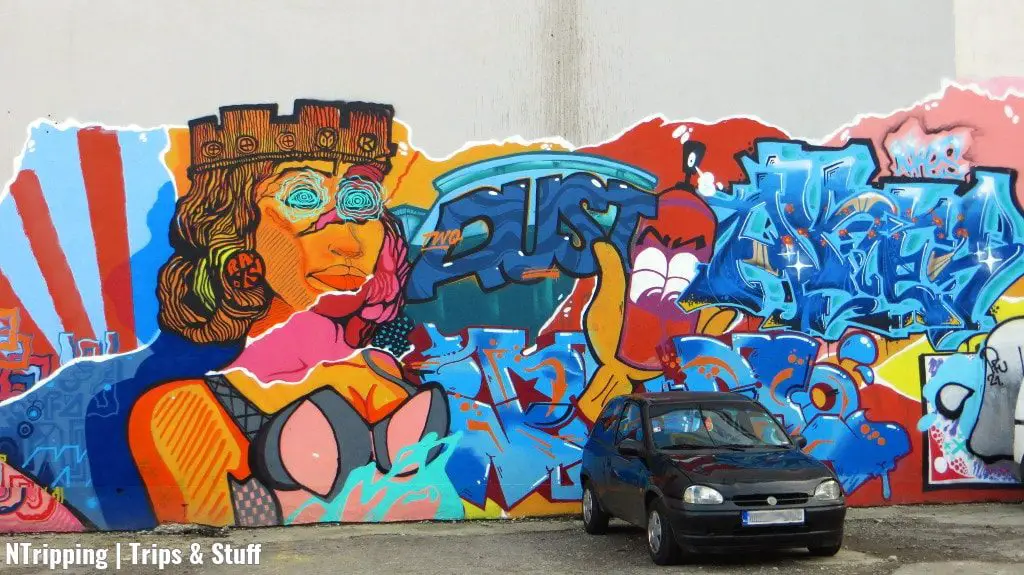
One of the best free things to do in Sofia is to embark on a captivating journey through the city’s flourishing street art scene. The dynamic urban canvas showcases an eclectic mix of creativity and cultural expression.
Wander through the city’s streets and alleyways, and you’ll encounter striking murals, thought-provoking graffiti, and vibrant installations that breathe life into the city’s walls.
Sofia’s street art scene is a testament to the city’s evolving identity, where contemporary art merges with historical surroundings. Each artwork tells a story, often reflecting societal issues, political statements, or simply the artists’ imaginative visions.
It’s an ever-changing gallery that offers a unique and immersive experience for art enthusiasts and curious travelers. The best hidden places in Sofia to see graffiti are across the street from the Serdica excavation site and on Veslets Street. The murals often change, so you’re no longer able to see Lady Sofia from the photo above.
Shopping Areas in Sofia: Local Brands and the Best Value for Money
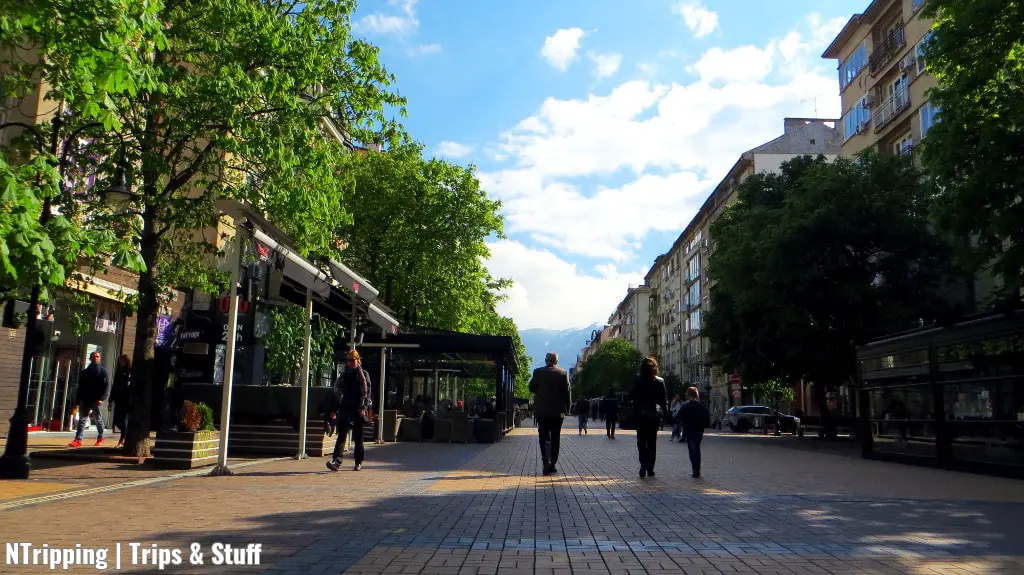
If shopping is among your favorite activities while traveling, you’re in luck. Below, you’ll find the best areas to satisfy your shopping cravings. Exploring these places is also one of the top things to do in Sofia, Bulgaria.
31. Vitosha Boulevard: The Most Famous Pedestrian Street in Sofia
Vitosha Boulevard is a bustling pedestrian street lined with cafés, eateries, and shops. It’s an ideal spot for a leisurely stroll and a people-watching session.
If you have the time and budget to spare, take a seat at one of the establishments. Savoring a cup of coffee, a refreshing beer, or a delicious lunch while relishing the colorful parade of passersby is a great way to spend a few hours in Sofia.
However, it’s worth noting that Vitosha Boulevard is known for its higher prices, which may not always align with the quality of the offerings. Consider exploring other dining and shopping areas in the city for a more budget-friendly and authentic experience.
32. Women’s Market: The Best-Known Open-Air Market in Sofia
Sofia boasts several expansive open-air markets. None are as renowned as the bustling Zhenski Pazar, or Women’s Market. Located in the heart of the city, this market is a vibrant hub of activity where you can discover a diverse array of goods.
At Zhenski Pazar, you can find an impressive selection of fresh produce, fragrant spices, local delicacies, souvenirs, clothing, hand-made jewelry, and an assortment of household items. It’s a sensory delight, offering a glimpse into Sofia’s vibrant culture and culinary traditions.
✔️ Tip: Keep in mind that the market can be crowded, so guard carefully your belongings against pickpockets. When purchasing fresh produce, beware of the possibility of altered scales.
33. Pirotska Street: The Budget-Friendly Shopping Paradise
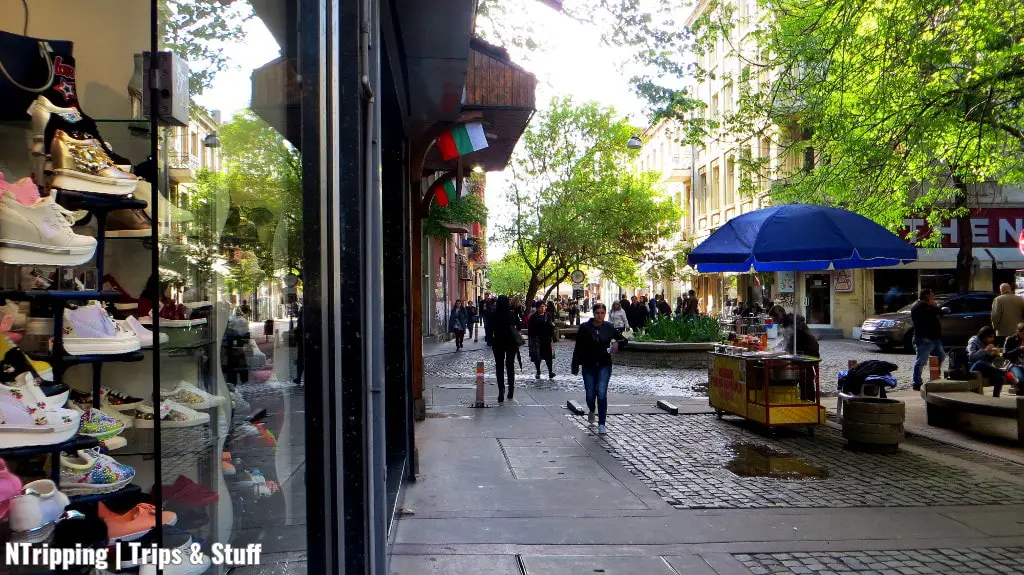
Pirotska Street is another pedestrianized street in Sofia, famous for its shopping opportunities. Unlike Vitosha Boulevard, the offerings here will match any budget.
You can find everything you might or might not want to buy in the 350 m / 1,150 ft. long pedestrian section of the street. Gift shops, covered bazaars, fashion boutiques, cheap clothes and shoe stores, supermarkets, drugstores, street food stalls, cafés, beggars, and rich tourists on a shopping spree will surround you.
The prices are very reasonable and the quality of the goods is decent. If you’re searching for authentic vacation souvenirs or new clothes for your wardrobe, this is my recommended place to shop.
Travel Tips for Visiting Sofia, Bulgaria Like a Local
You already know what to do in Sofia. Now, let’s find out the best travel tips for visiting Bulgaria’s capital.
- Electricity. Bulgaria uses 220 V, 50 Hz, and the same plug as in most of Europe. You can buy travel adapters at gadget shops and electronic stores if you forget yours.
- Currency. The local currency is called “lev” (singular) or “leva” (plural). The exchange rate is fixed at €1.00 = 1.95 BGN (about $1.00 = 1.80 BGN). Change your money only at banks or withdraw from ATMs. Avoid exchange kiosks as they buy and sell at unfavorable prices, and often try to scam customers.
- Accommodations. Sofia is still one of the cheapest European cities to visit. You can find reasonably priced hotels even in the city center. The top location for the best views is Tsar Osvoboditel Blvd. The higher your room is, the better the view over the roofs of Sofia will be. My recommendations are InterContinental Sofia and Sense Hotel Sofia.
- Restaurants. In the heart of Sofia, you’ll find traditional Bulgarian food, as well as international dishes. Street food is cheap, delicious, and safe to eat. You can also find excellent cafés in Sofia as well as great pubs and clubs.
- Transportation. The subway is the most convenient public transportation in Sofia. It also goes to Sofia Airport. Note these tricks for riding it: Don’t buy a single ticket in advance. Tickets expire quickly and are only valid at the station you bought them. If you don’t want to buy a single ticket each time you ride the Sofia Metro, buy a rechargeable magnetic card.
- Day trips from Sofia. You can easily satisfy your thirst for adventure and explore Bulgaria by taking a few day trips from Sofia. I recommend this guided tour to Rila Monastery and Boyana Church to visit two UNESCO World Heritage Sites in just one day.
- Safety. Sofia, Bulgaria is no different than any other large city. There are always a few things to avoid and watch out for. Beware of pickpockets, beggars, and stray animals. Use your common sense and observe your surroundings carefully. Bulgaria is safe when you travel smart.
Now You Know Which Are the Best Things to Do in Sofia, Bulgaria
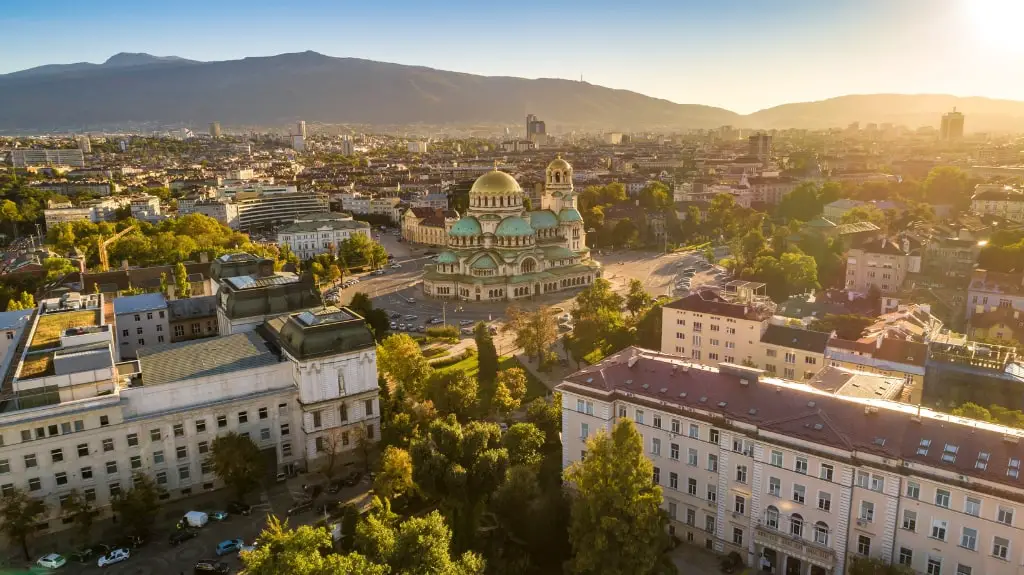
There you have it – the 33 best things to do in Sofia, Bulgaria.
Exploring the capital city is one of the top reasons that make Bulgaria worth visiting.
Despite not being the most glamorous destination in Europe, Sofia’s rich history and diversity offer a brilliant fusion of architectural styles, colors, shapes, and vibes that will make you fall in love with the city.
In fact, I’m sure once you’ve checked out a few of the things to do in Sofia on this list, you’ll come back for the rest.
Now, it’s your turn:
What’s the first place you’ll explore in Sofia, Bulgaria?
Let me know in the comments below.
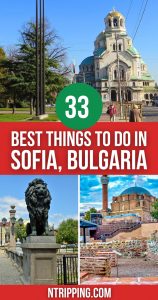
This is definitely the best guide on Sofia out there in the internet galaxy. I am sure Google had an orgasm when you published it!
I pinned and will definitely come back again to read more!
Thanks for your invaluable support, Svet!
I don’t know anything about Google’s orgasms, but I wish people would understand the dazzling charisma of Sofia better after reading the guide :-)
Cheers, N.
You are very welcome, N!
And I am sure they will :) Have a lovely day!
Great post! We almost rented an apartment in Sofia for a month back in 2013 but chose Istanbul instead. Your post has brought back all the memories of why we almost went there – mostly the mountain views from the city! Hope to get there soon, though.
Hey Juliana, thanks for your kind words. Hope to see you in Sofia :)